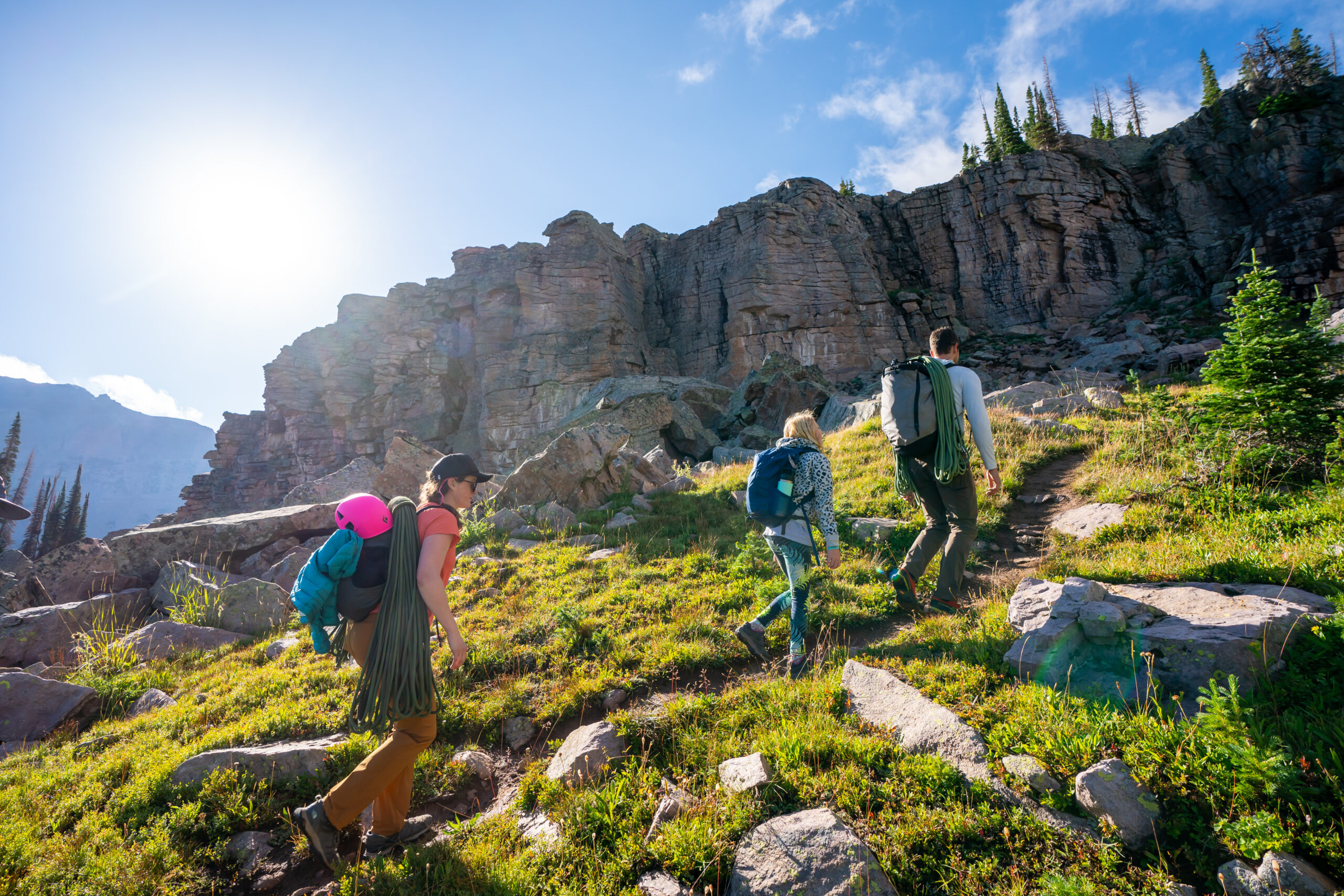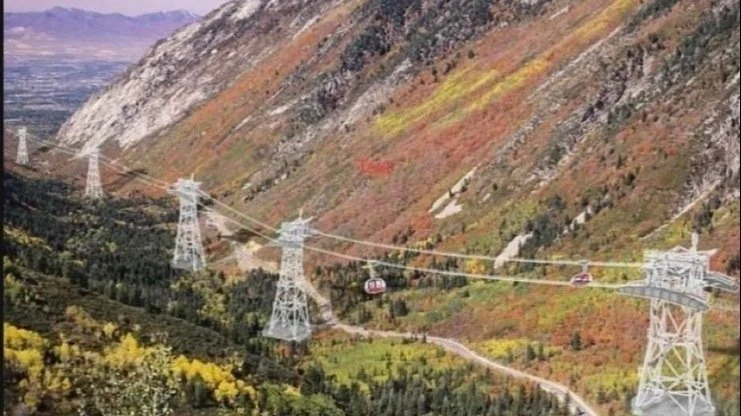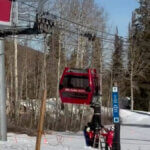News
Little Cottonwood Canyon’s Alpenbock Loop is added to the National Register of Historic Places
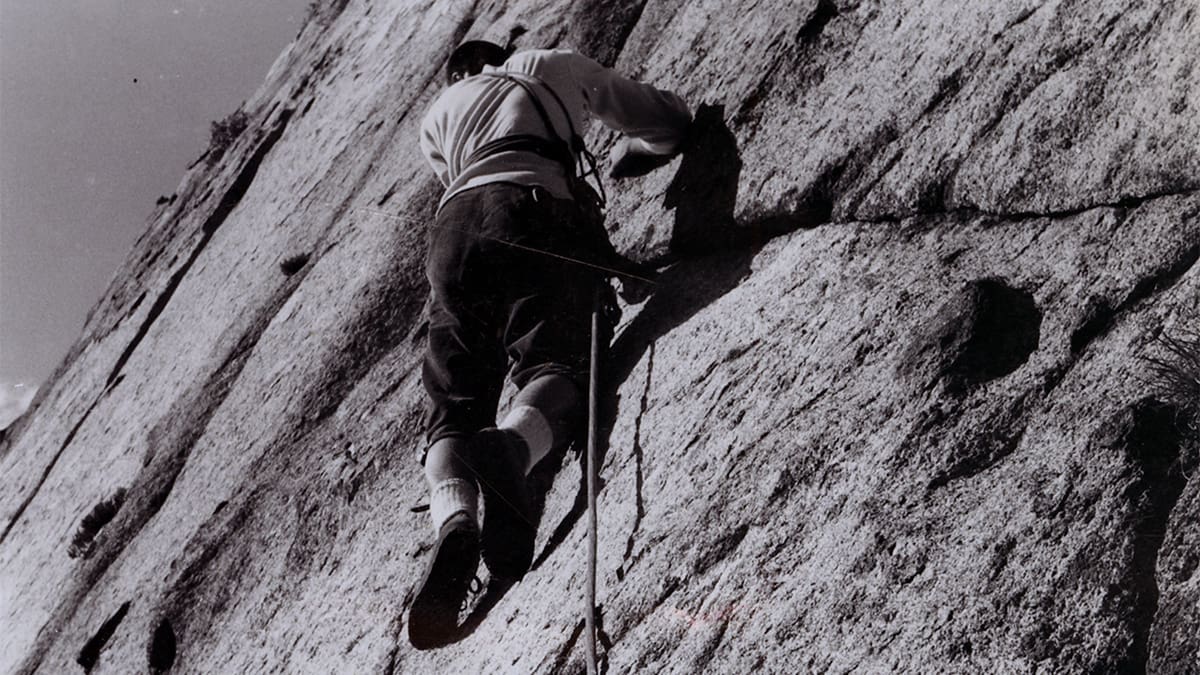
Larry Love leading the first pitch of the Sail Face in Little Cottonwood Canyon. Photo: Rick Reese Papers, J. Willard Marriott Library, Special Collections Department, University of Utah. Photographer: Ted Wilson
Could the historic designation hinder progress of the controversial LCC Gondola?
LITTLE COTTONWOOD CANYON – History was made in Little Cottonwood Canyon this week when lower Little Cottonwood Canyon became America’s first recreational climbing area to be listed in the National Register of Historical Places in the Library of Congress.
The Alpenbock Loop is a 1.7-mile trail located at the base of Little Cottonwood Canyon, that gives climbers access to some of the most popular boulders and climbing routes in the Wasatch Mountains. Officially named the Little Cottonwood Canyon Climbing Area, this historic district includes two designated trails, nine boulders, and six crags. The crags feature 17 historic climbing routes that were first established between 1962 and 1974, and since then many additional routes have been developed.
The designation was made official on August 5th, 2024, and comes after two years of work by the Salt Lake Climbers Association to nominate lower Little Cottonwood Canyon’s (LCC) climbing area as a historical climbing landscape. This advocacy work celebrates the legacy of climbing in LCC that lives on today. Recognizing LCC climbing and its surrounding landscape for its historical value elevates the need to protect and preserve this special place in the hearts and minds of Utahns.
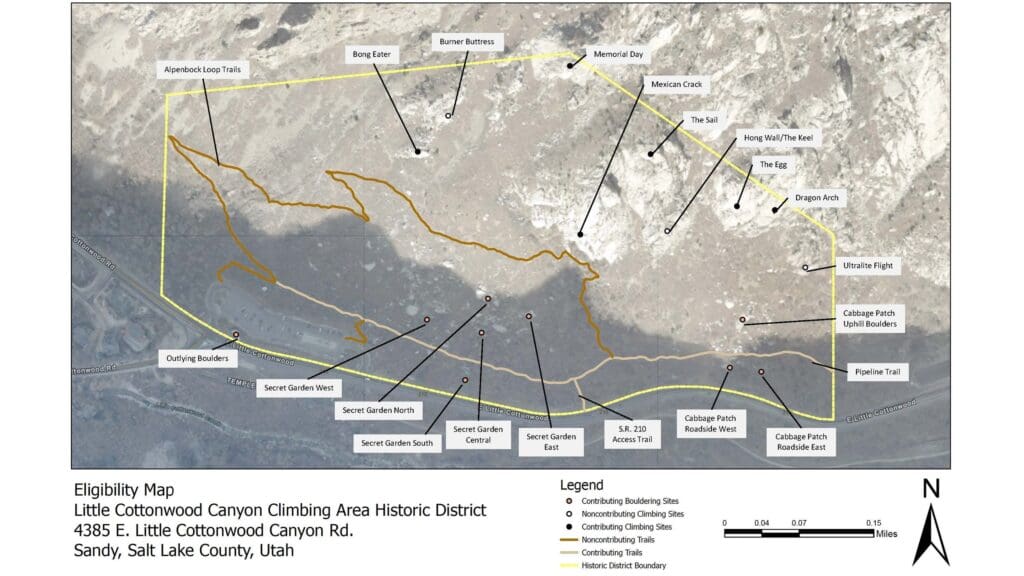
With the support of grants, specialist Kirk Huffaker Preservation Strategies was hired to write the historical nomination.
“This could not have been accomplished without the expertise of volunteer SLCA Policy Committee Member and Assistant Director of the American West Center, John Flynn. A huge thanks to University of Utah Librarian Tallie Casucci and her library colleagues for their dedicated work on this project. We appreciate the endorsement from the Forest Service and the Utah State Historic Preservation Office,” SLCA said in a statement.
A gathering centered around the designation will occur September 25th, 2024 from 5:30-6:30PM in the Lower Little Cottonwood Park & Ride.
Option for a one-mile hike along the historical Alpenbock Loop to follow led by SLCA staff.
Will the designation stop the LCC gondola from being built?
The push to apply for historic status was driven by the Utah Department of Transportation’s (UDOT) proposal to build a gondola in Little Cottonwood Canyon, aimed at easing winter traffic on State Route 210, the only access to Alta and Snowbird ski resorts. The State Historic Preservation Board began exploring whether the area could qualify as a historic site in 2018, soon after UDOT started drafting its Environmental Impact Statement for the gondola, accordiing to a recent Salt Lake Tribune feature. The inquiry was prompted by a suggestion from a local climber, with the Salt Lake Climbers Alliance (SLCA) and other climbing organizations later provided additional supporting information.
Though the historic designation for the Alpenbock Loop is unlikely to prevent the gondola’s construction, it could impact how the project is carried out. Experts note that even properties on the National Register of Historic Places can be altered or demolished. However, changes to the area now that it has designation may require greater consideration of the visual impact caused by gondola cables.
Where is this special place exactly?
This climbing district is found at the mouth of Little Cottonwood Canyon, southeast of Salt Lake City, Utah. It’s accessible via the Little Cottonwood Park and Ride using the Alpenbock Loop or Pipeline trails, and from the Grit Mill Parking area via the Grit Mill Trail. More route details can be found on **Mountain Project** or in the guidebook *A Granite Guide*.
Historical Significance
The period from 1962 to 1974 marks the district’s peak influence, driven by the pioneering efforts of the Alpenbock Climbing Club. The group, founded by Ted Wilson and Larry Love, introduced technical climbing techniques and fostered the “Leave No Trace” ethic. George Lowe furthered the area’s legacy by leading winter ice climbing endeavors. This era also saw the development of iconic granite formations, essential to Utah’s climbing community.
Cultural Influence
The district’s reputation spread nationally due to notable climbers like Yvon Chouinard and Royal Robbins, who collaborated with the Alpenbock Club, helping legitimize Utah’s climbing scene and connect it with broader international climbing culture. The Alpenbock Club’s work also encompassed search-and-rescue efforts, leaving a lasting legacy.
The club’s history is preserved in the Alpenbock Club scrapbooks, which are available online at the J. Willard Marriott Digital Library.
What is it the The National Register of Historic Places?
The National Register of Historic Places (NRHP) is a U.S. federal list of historically significant districts, buildings, sites, and objects. The Little Cottonwood Canyon Climbing Area Historic District, recognized on this register, holds state-wide importance for its cultural significance in Recreation and Social History, particularly for its role in advancing rock climbing in Utah.
















